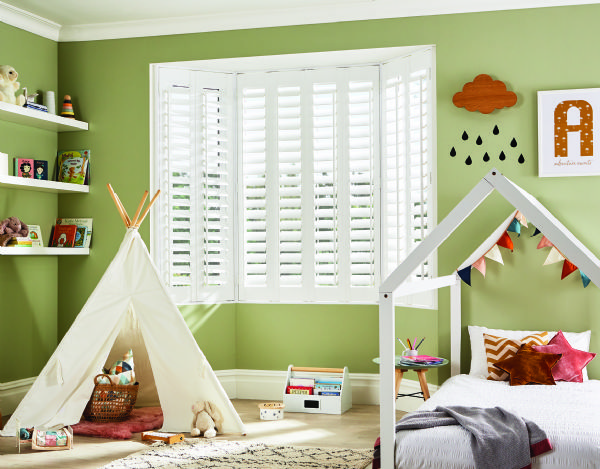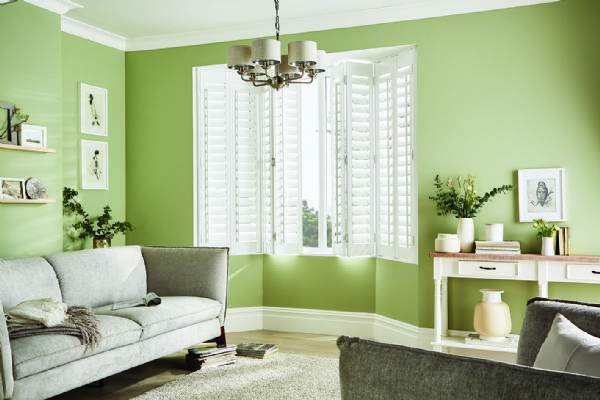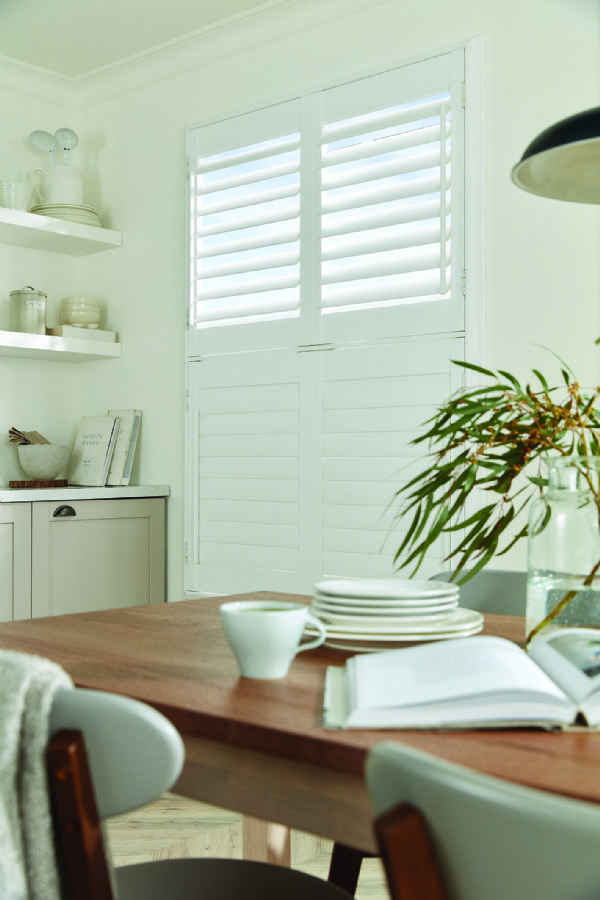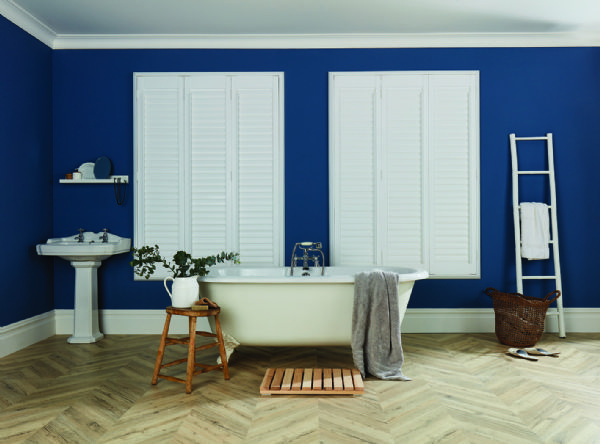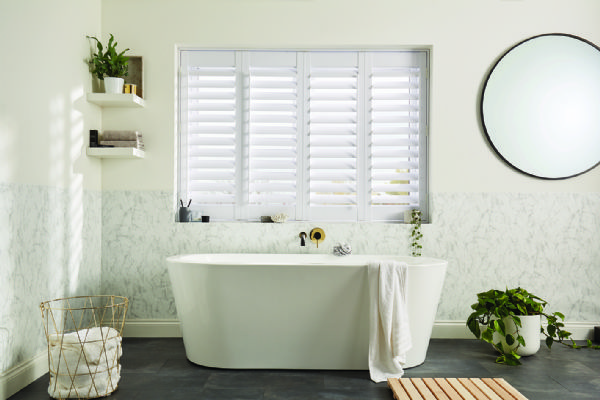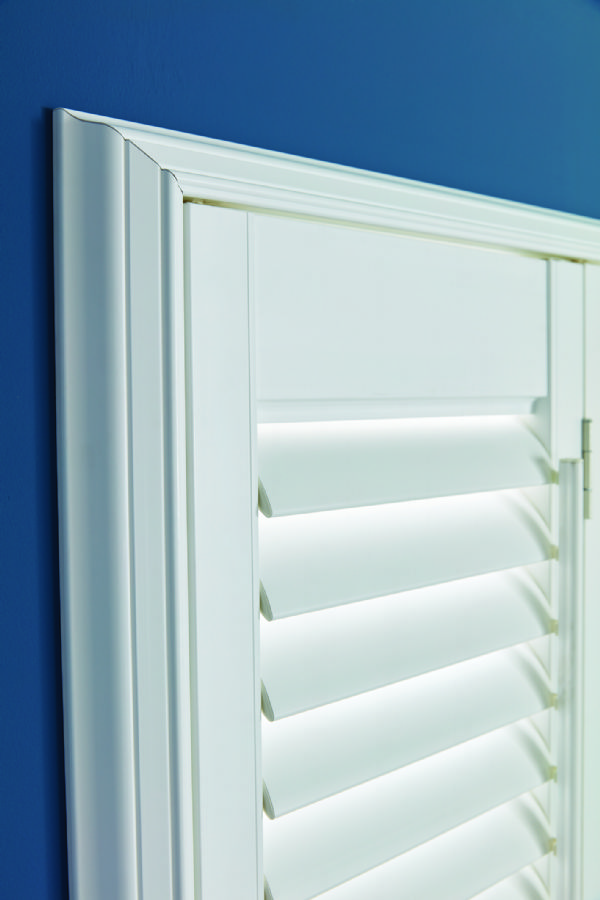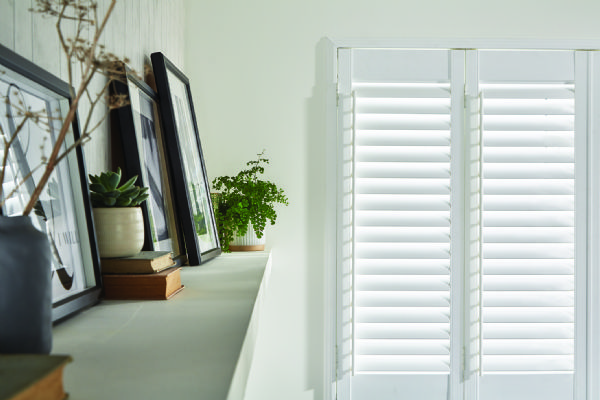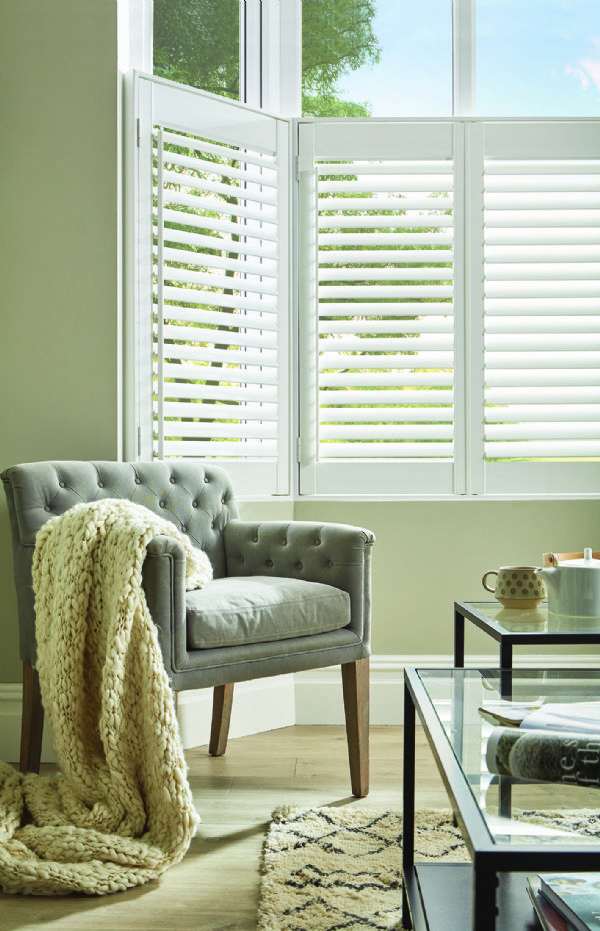Shutters
Shutters are a truly luxurious addition to any home’s interior. Their popularity has surged in recent years, offering a bewildering array of options. To help you navigate this exciting world, we’ve put in significant effort to provide you with an in-depth overview of the various shutter styles and materials available. Shutters are a costly investment, so we want you to make the most informed decisions possible.
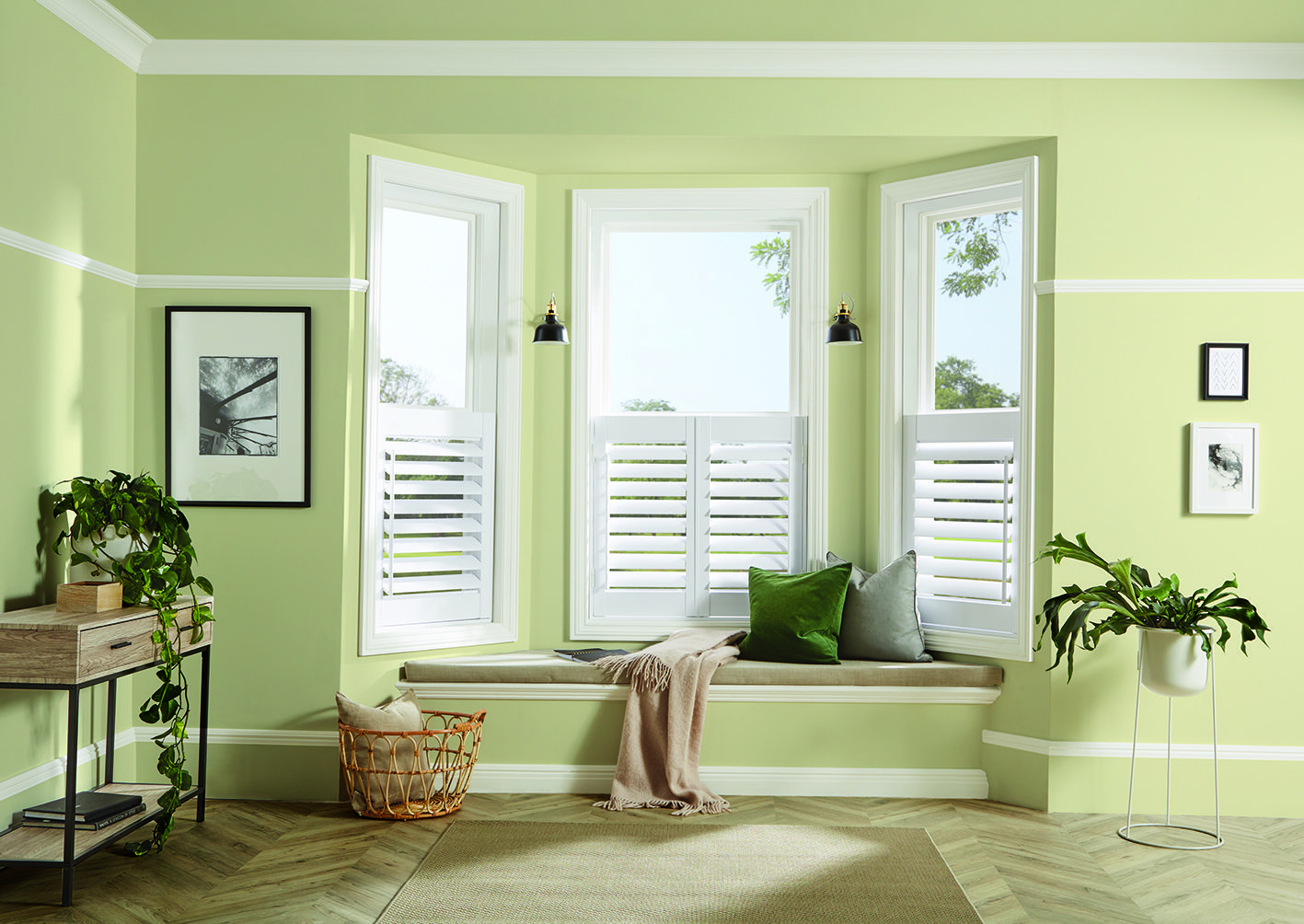
Café Style Urban Shutter
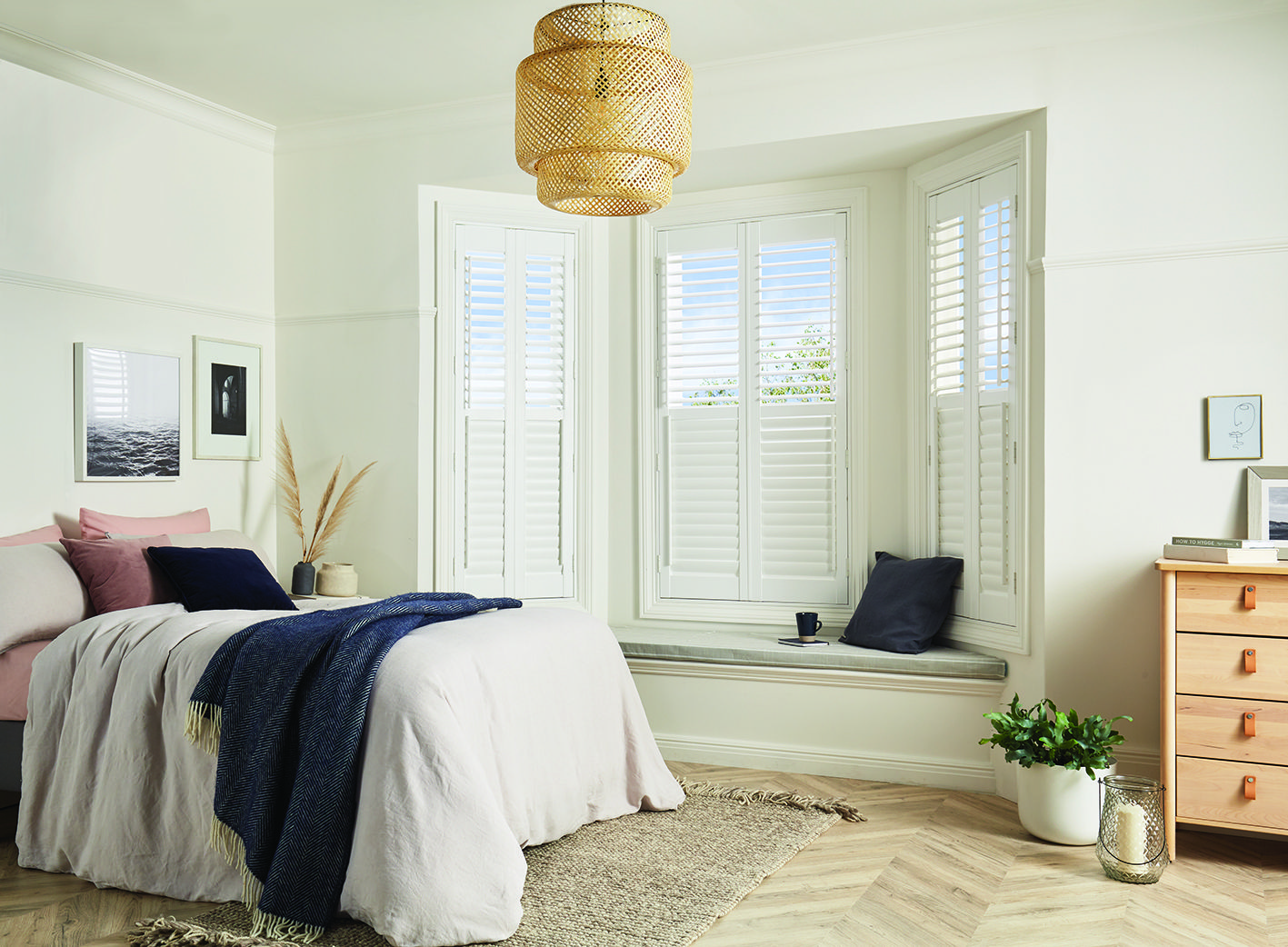
Urban Shutters with a split tilt
WHAT ARE SHUTTERS MADE FROM AND SHOULD YOU CARE?
Shutters are broadly made from one of 3 materials.
MDF (Medium-density fibreboard)
These are usually the most affordable shutter options, come with the shortest guarantee periods, and the vast majority are manufactured in China.
Composite
Composite materials, such as plastic, fall in the middle in terms of pricing. They usually have the longest guarantee periods and are predominantly manufactured in the UK or Europe. However, there are various types of composite used in shutter manufacturing, each with its own advantages and disadvantages.
Hardwood
Real hardwood shutters are usually the most expensive, heavy, and their guarantee periods vary. Almost all of them are manufactured in China.
Why it matters?
Understanding the materials used to manufacture shutters is crucial to avoid problems later in life. Windows become less efficient over time, and their seals break down. When a window fails sufficiently, you may experience condensation or increased moisture in the air around your windows. MDF is susceptible to splitting if it gets wet or exposed to high levels of moisture. Shutters effectively create a barrier around your windows, often creating a microclimate with significantly different temperatures from your room. As window seals fail, moisture content, particularly during winter months, increases, leading to issues. Therefore, while shutters made from MDF offer the lowest prices, they come with the highest risks over time.
Real hardwood shutters, in terms of sales volume, are experiencing a decline. Hardwood is a heavier material to work with, resulting in higher production costs. Additionally, larger windows can become quite heavy to manage.
The middle ground is dominated by various types of composite materials. Welcome to Polysilk vinyl!
ORIGINALLY FROM CANADA, MADE IN THE UK
We offer Urban Shutters, a product manufactured in the UK, with its shutter system and composite material originating from Canada. The polysilk vinyl, which forms the shutter’s foundation, is extruded in the UK.
Canada is renowned for its extreme temperature variations. During the winter months, certain regions experience temperatures as low as -30 degrees Celsius, while in the summer, they can soar up to +40 degrees Celsius. Polysilk vinyl was specifically designed to endure these extreme temperature conditions.
We decided to offer this particular type of Shutter because:
- It’s manufactured in the UK and comes with a 10-year warranty.
- It’s highly modular in design, making it easy to repair.
- It has the lowest carbon emission footprint. The material is so strong that the amount of packing needed during distribution is a fraction of MDF or hardwood shutters.
- It’s lightweight.
- It’s durable and easy to wipe off marks.
- Water resistant
Functionality of Shutters
Daytime Privacy
Shutters are an excellent choice for providing daytime privacy, effectively blocking the view into your room during daylight hours. This is the core concept behind their design.
Protect items against fading
The louvres on the shutter provide excellent protection against fading. With shutters, you can also choose to separate how the louvres function on each shutter door.
Glare from the sun
The louvres on shutters allow excellent control over light.
Nightime Privacy
When the blinds are shut, you can be certain of complete privacy during the nighttime hours.
Thermal Gain (Heat)
Shutters are highly effective in reducing heat buildup during warmer temperatures because they completely cover the window.
Thermal Loss (Heat loss from inside your house)
Shutters are likely the second most effective method of reducing heat loss from your home, aside from Perfect Fit Pleated blinds.
Blackout effect for bedrooms
Shutters are not blackout blinds, a common misconception. However, the amount of light that bleeds through a shutter is negligible. For a comprehensive understanding of your options for blackout blinds, visit our Blackout Blinds product page.
Types of Windows & Doors Suitable for Shutters
Standard Windows with a normal ledge
Shutters work well in most window types, but there are a few considerations to keep in mind if you have part tiles in the width section of a window, dado, or picture rail. For more information, refer to the section titled “WHAT PEOPLE FORGET.”
Windows which have a small window ledge or no window ledge at all
If you have a shallow depth aperture, Shutters generally work well. There are always exceptions to the rule, but for the main, apertures of any depth should work with shutters.
Sliding Doors/French Doors/Bi Folding Doors
While people do install shutters across doors, we strongly advise against it. Having doors that swing inward can make it challenging to open doors that swing outward.
Bay Windows
Shutters generally work well in any type of bay window.
DIFFERENT TYPES OF SHUTTER / CONFIGURATION
There are various types of Shutter, including full-height, café-style, and tier-on-tier options. Additionally, there are numerous configurations for the Shutter doors. We recommend downloading the Shutter brochure and thoroughly reviewing all the available options.
Following any survey of your windows, we will provide detailed explanations of your choices and ensure you are aware of all the pros and cons.
KEEPING IT REAL - WHAT PEOPLE FORGET
Not everything in life is a bed of roses. At our core, our company values integrity. We’re not here to sell you a dream; we’re here to educate you about your choices. Regardless of what you decide, you’ll have made an informed one. Over the past 50 years of manufacturing and selling blinds, we’ve noticed that shutters are the one product that most consumers are poorly advised about. It’s easy to fall in love with their aesthetic, but you might miss some of the practical issues of living with them day in and day out. To help you avoid common mistakes when choosing shutters, we’ve compiled a list of things to keep in mind.
Daytime Privacy
Shutters are designed for daytime privacy, and they’re not suitable for everyone. If your living situation doesn’t require daytime privacy, shutters might not be the best choice for you.
Shutters are essentially a framework with a set of doors that open inward to a room. The size, number, and configuration of the doors depend on the width of your window and your choices when placing an order. Naturally, shutters restrict the amount of light entering a room.
You need a spacious room with ample room around a window to accommodate those doors opening inwardly. A common misconception is that the doors will fold flat against the wall - they won’t. If you intend to open the doors to a shutter every day just to bring in more light, you’re likely looking for the wrong type of blind.
The most common damage to a shutter occurs when a door, left open, is knocked into by something or someone.
Impact on natural light
Shutters restrict the amount of natural light entering a room compared to most other types of blinds. This effect is most pronounced in North or East-facing rooms. For more information, refer to our comments above regarding opening the doors to a shutter.
Obstructions to doors caused by furniture and other items
Many people overlook the fact that doors on shutters open inward. We often come across rooms where furniture is positioned at an elevated height and a distance from the window, obstructing the doors from opening fully or making it extremely challenging and awkward to open them effortlessly.
Repairs matter more than a guarantee
If you’re purchasing shutters, make sure you have a clear understanding of the available repair options! Most shutter issues you’ll encounter won’t be covered by any warranty. Why? Because most shutter problems stem from accidental damage, particularly to hinges and doors that have been left open and knocked into.
Apart from being made of different materials, shutters also vary in construction and modularity. Some are easier to repair than others. Don’t hesitate to ask questions and ensure you’re satisfied with the answers. If necessary, request the information in writing. We can and will promptly repair any damage to shutters we’ve installed. We can also source replacement parts within a matter of days.
Additionally, we manufacture Perfect Fit Shutter Lite, which uses the same components and have many of these in stock.
